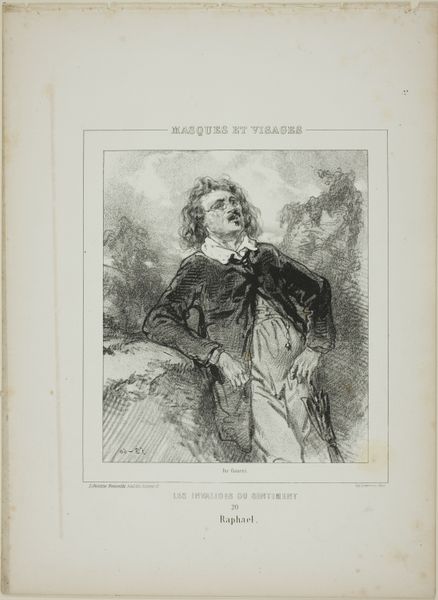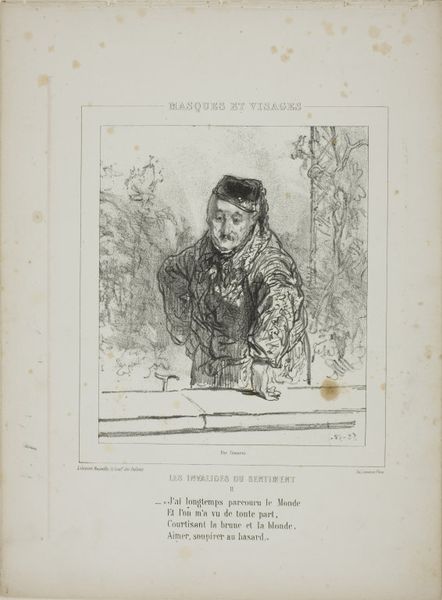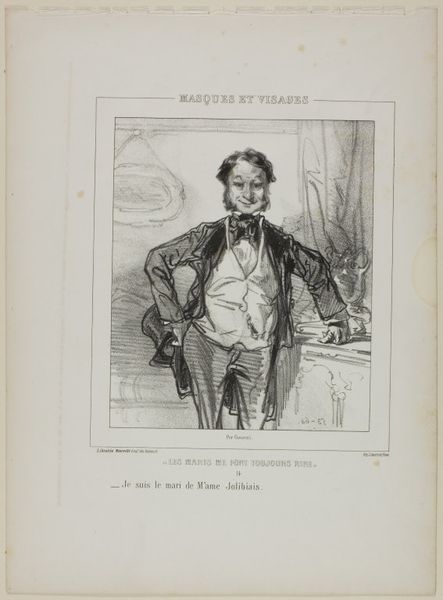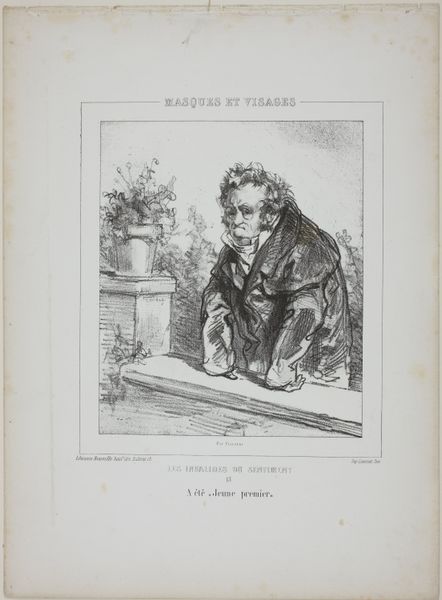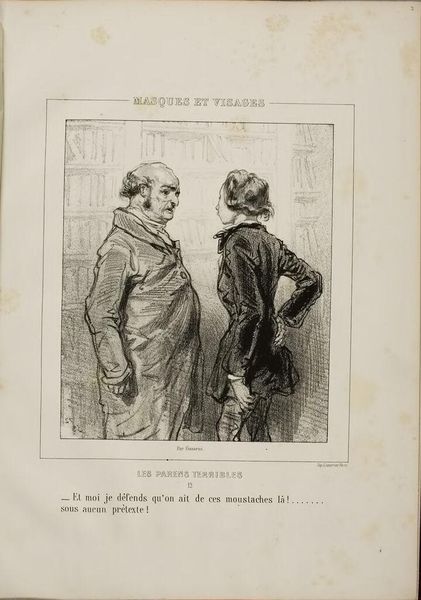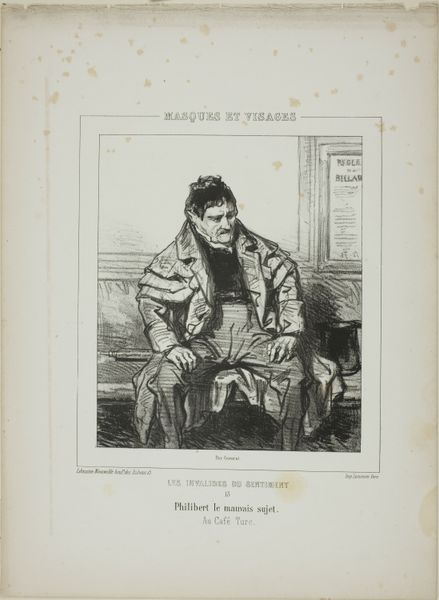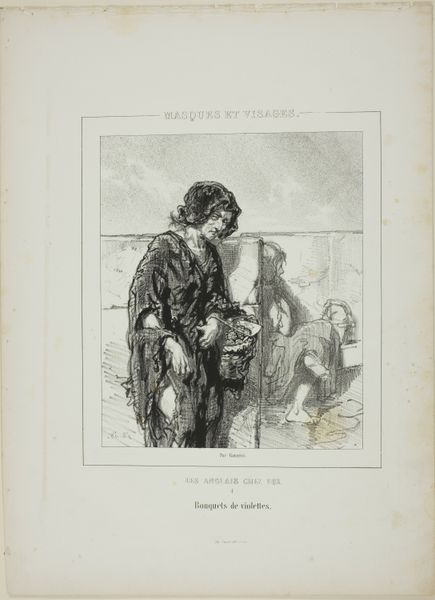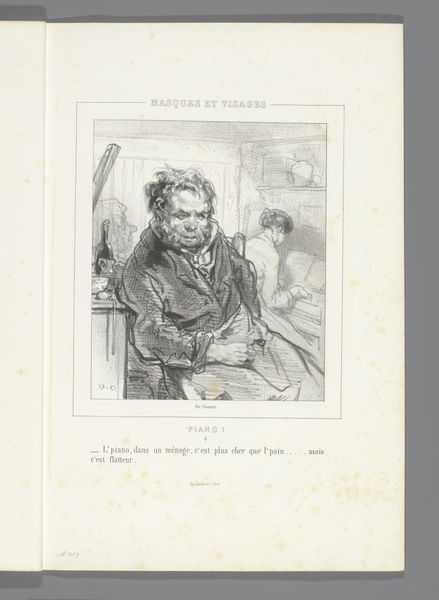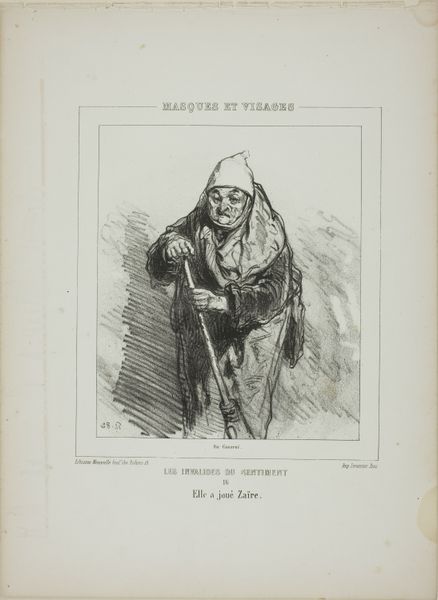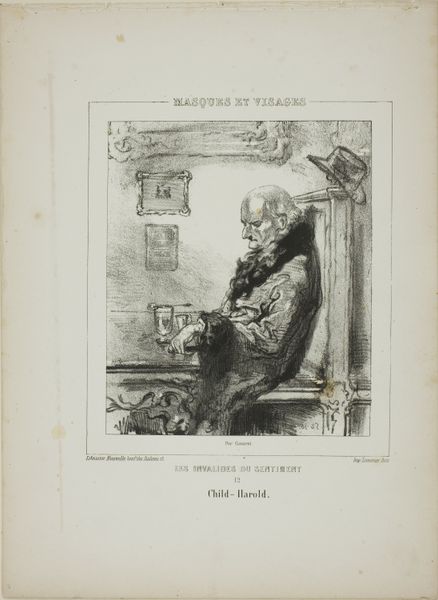
Copyright: Public domain
This lithograph was made by Paul Gavarni in the 19th century, using a printmaking process that democratized image production. Lithography relies on the simple principle that oil and water don't mix. The artist draws an image with a greasy crayon onto a flat stone or metal plate. The stone is then treated with chemicals, so that only the drawn areas will accept ink. Finally, the image is transferred to paper using a press. Notice how Gavarni uses the lithographic crayon to create a range of textures, from the soft shading of the face to the crisp lines of the clothing. This ability to mimic the effects of drawing made lithography a popular choice for satirical prints. The rise of lithography was directly tied to wider social issues. It allowed for mass production of images, making them accessible to a wider audience, and creating new markets for artists. The detailed rendering and reproducibility afforded by the process, combined with the relatively low cost, enabled the broad circulation of social commentary, reflecting the changing landscape of labor, politics, and consumption in 19th-century France. So, when we look at this print, we're not just seeing an image, but also a reflection of the changing relationship between art, production, and society.
Comments
No comments
Be the first to comment and join the conversation on the ultimate creative platform.
